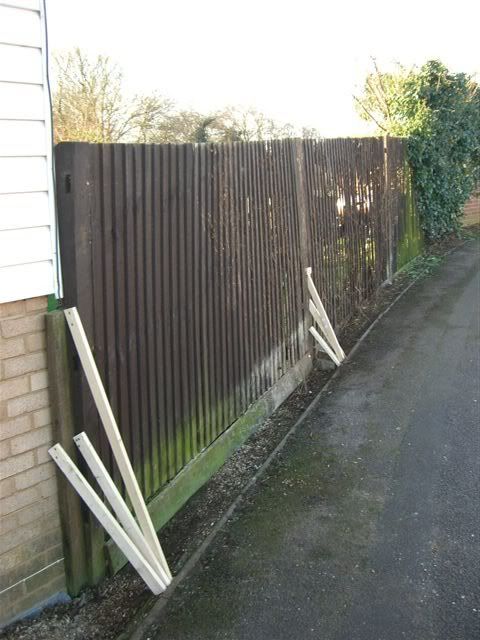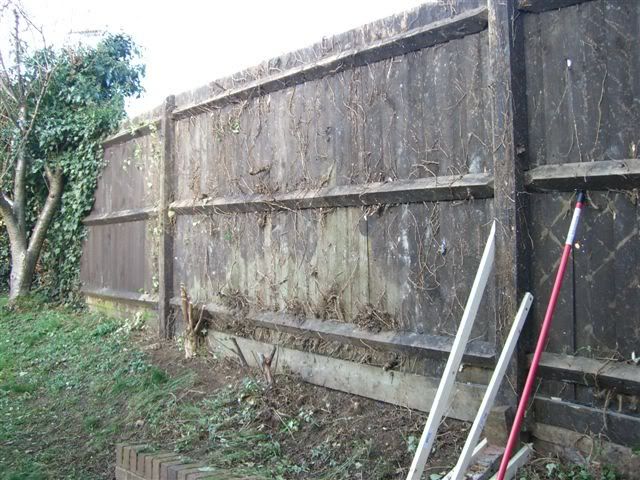Hi all
ANOTHER fence post (no pun intended). Yep, the winds brought down my fence as well and whilst I am keen to put a new one up myself unfortunately it doesn't look to be the easiest of jobs. My main question is whether to do this myself or get a fencer to do it.
If it was on flat soil with no public boundaries then I would try it myself. Unfortunately the current fence runs alongside the pavement. The current wooden posts are concreted in to the ground. This is not likely to be a lump of concrete in the middle of soil as I have the concrete from the pavement to complicate things. The garden slopes slightly and the soil is pretty loose around the posts.
Can someone paint a scenario of what I'm likely to encounter if I remove the current fence and put up a new one? I'm looking to use wooden posts set in concrete with arris rails and featheredged boards.
I've added some pics below to give you an idea of what I'm up against.
Cheers for any advice!

 [/img]
[/img]
ANOTHER fence post (no pun intended). Yep, the winds brought down my fence as well and whilst I am keen to put a new one up myself unfortunately it doesn't look to be the easiest of jobs. My main question is whether to do this myself or get a fencer to do it.
If it was on flat soil with no public boundaries then I would try it myself. Unfortunately the current fence runs alongside the pavement. The current wooden posts are concreted in to the ground. This is not likely to be a lump of concrete in the middle of soil as I have the concrete from the pavement to complicate things. The garden slopes slightly and the soil is pretty loose around the posts.
Can someone paint a scenario of what I'm likely to encounter if I remove the current fence and put up a new one? I'm looking to use wooden posts set in concrete with arris rails and featheredged boards.
I've added some pics below to give you an idea of what I'm up against.
Cheers for any advice!






